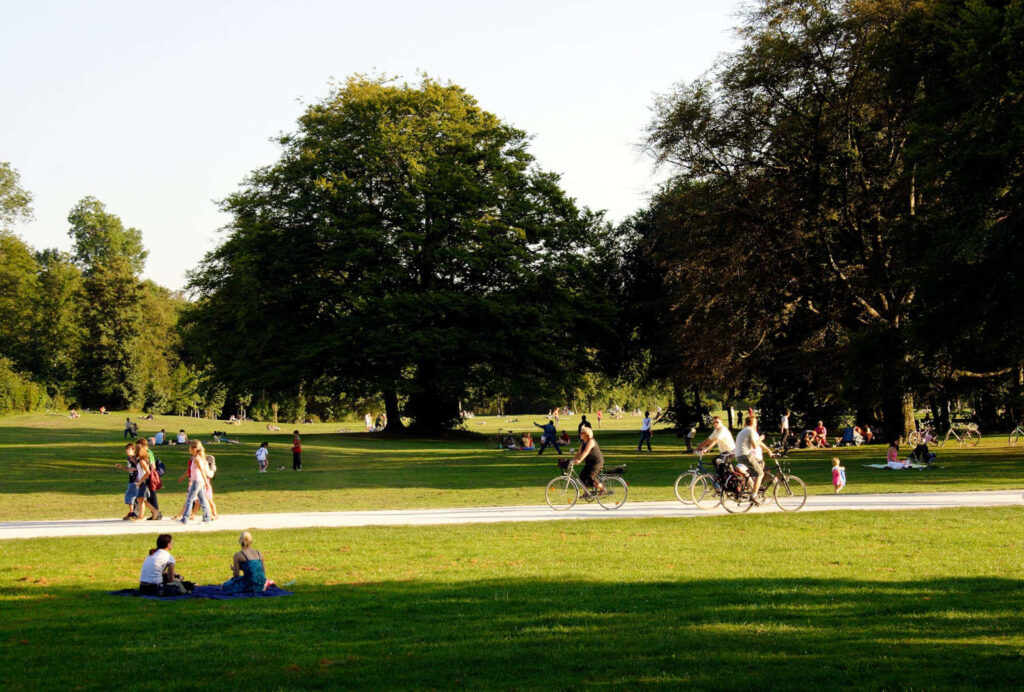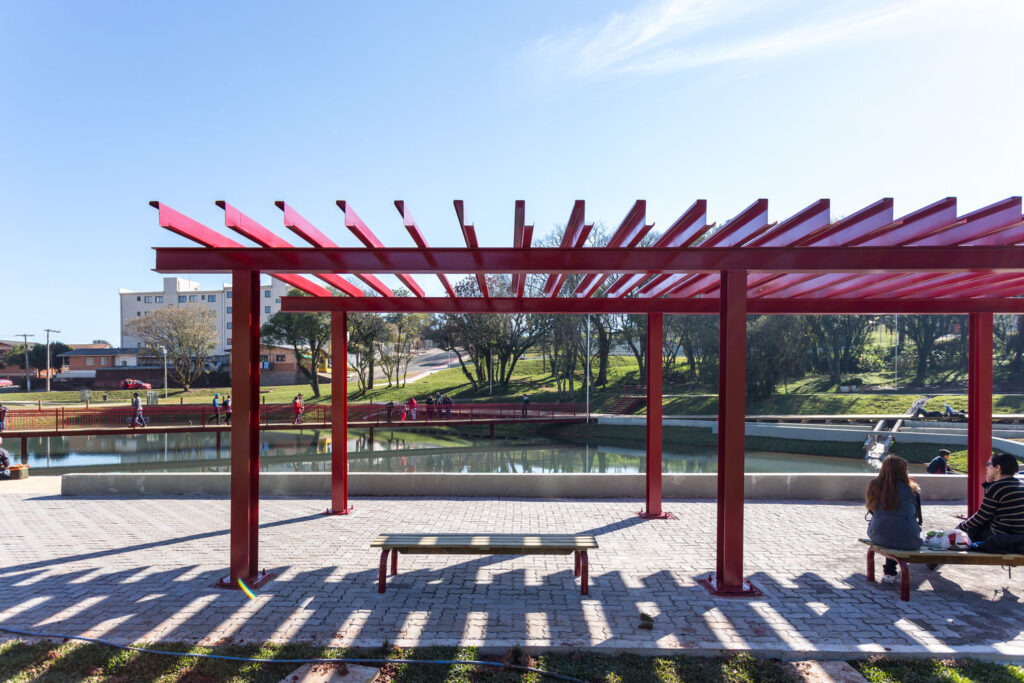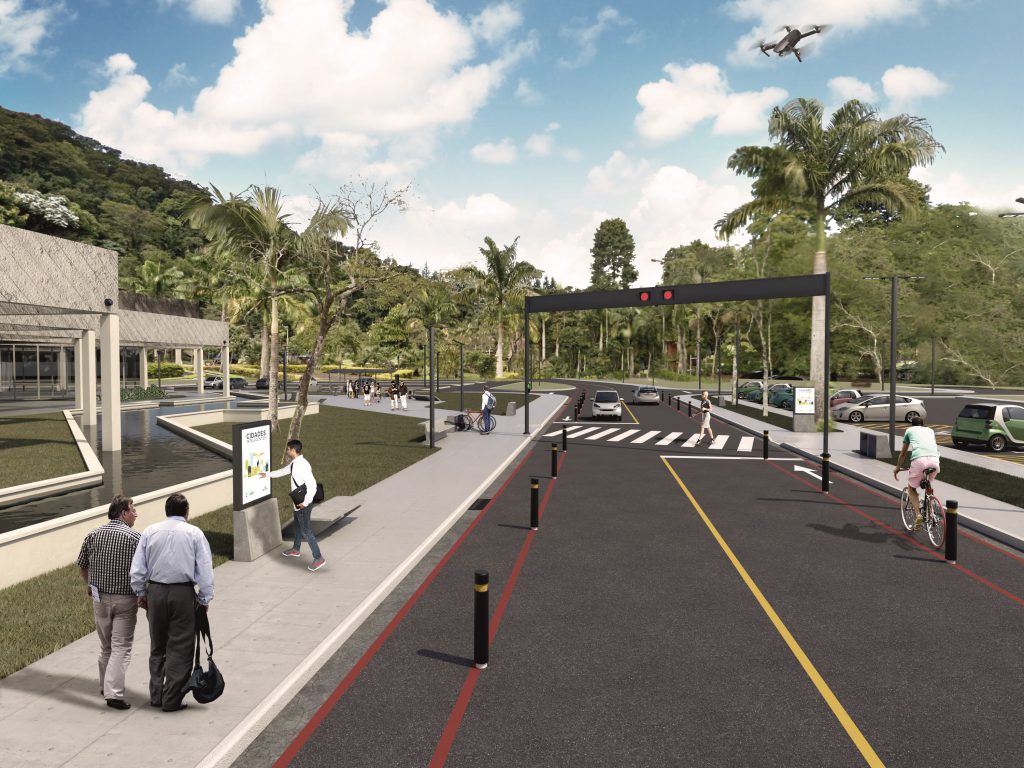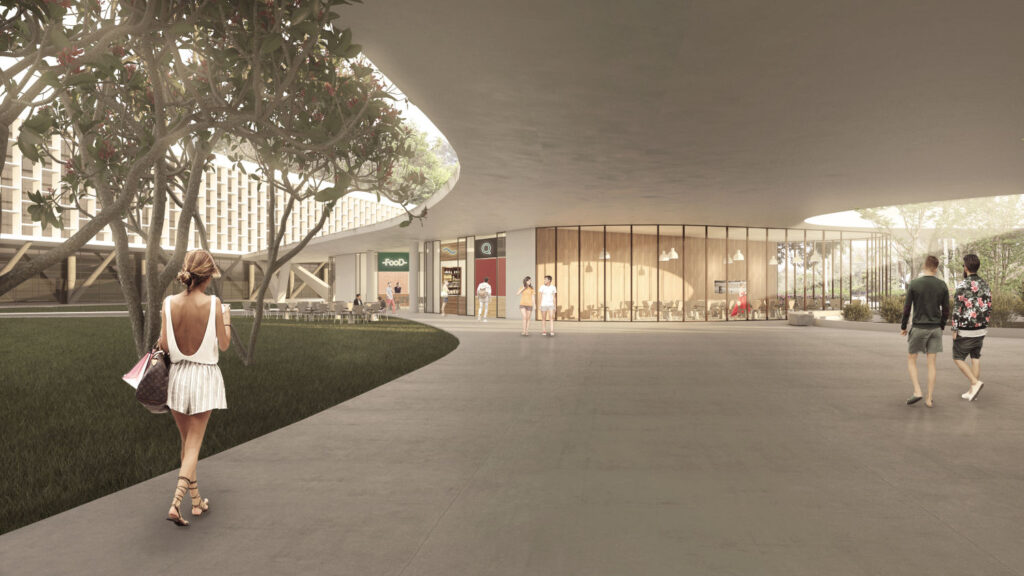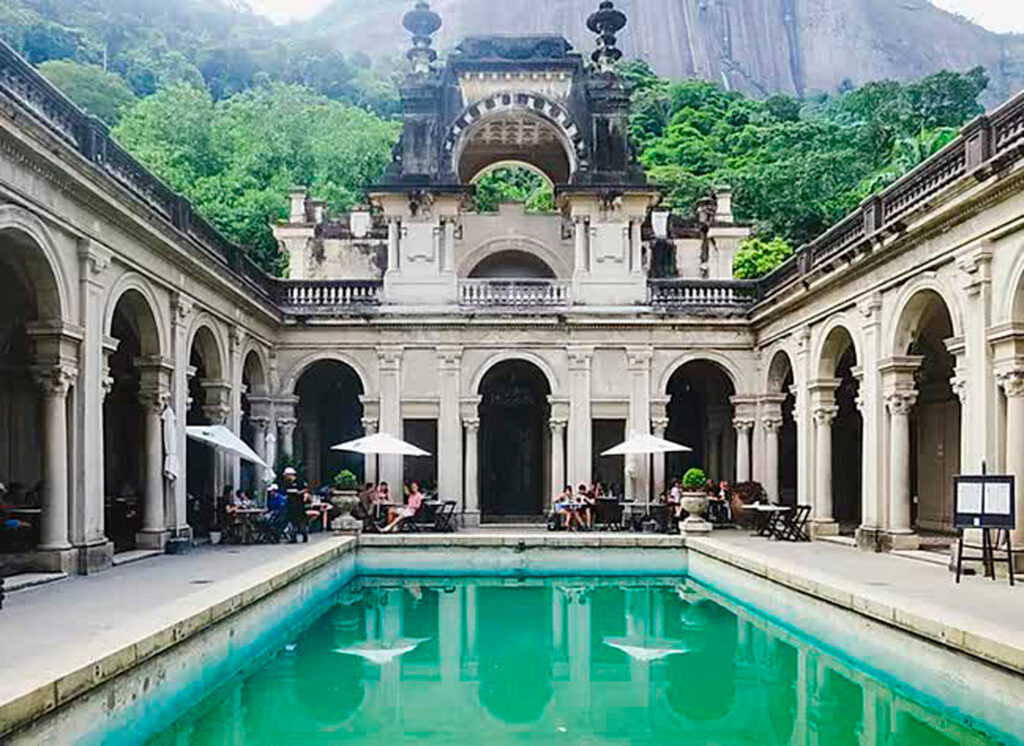The first urban park in the world was designed in 1843, in England, by the architect Joseph Paxton. This version was created more than 150 years ago and, since that time, it already had the purpose of increasing the quality of life and well-being of the people who passed through there.
Over time, the concept has developed, and today it remains focused on the population – but it also gained the characteristic of protecting the environment.
Os benefícios do parque urbano vão muito além do lazer e da recreação. Esses espaços verdes são essenciais para a saúde física e mental, promovem a convivência social, ajudam a reduzir a poluição e contribuem para o equilíbrio climático das cidades.
Continue a leitura para saber mais sobre o conceito e os benefícios do parque urbano!
What is an urban park?
An urban park is nothing more than a community space intended for environmental preservation and for the use of the population, whether for recreational or resting purposes. They are located in different cities across the country. As an example, we can cite:
- Ibirapuera Park – São Paulo;
- Tanguá Park – Curitiba;
- Tijuca National Park – Rio de Janeiro;
- Américo Renê Giannetti Municipal Park – Natal.
Among these parks, the highlight certainly goes to Ibirapuera Park, one of the most visited and photographed in Latin America. It opened in 1954 and has an area of 158 hectares.
The great differential of this park is the aesthetic beauty, vegetation and buildings of the Ciccillo Matarazzo Pavilion (which houses the Bienal de São Paulo) and the Bosque da Leitura (cultural environment recently revitalized by Plantar Ideias).
Benefits of the urban park
Check out the main advantages of urban parks:
For the population
For people, gains are related to quality of life, especially with regard to mental health issues. Parks favor relaxation and moments of rest and reflection, in addition to being the ideal space for the practice of physical activities.
Além disso, como local recreativo, os parques urbanos permitem que a população acesse exposições e shows e tenha contato com a natureza, ficando mais próxima de animais de diferentes espécies e de uma vegetação muito rica em diversidade, que ajuda a mitigar os efeitos da poluição no organismo.
for the environment
As for the environment, the great benefit of urban parks is related to the production of oxygen and reduction of the effects of ultraviolet radiation. This type of park also favors the multiplication of animal and plant species, allowing people to have more appreciation for nature and create more habits to preserve the environment.
See too: Projeto de academia ao ar livre: por que é importante?, Why implement pet friendly space in corporate environments?
Por que frequentar os parques urbanos?
Frequentar parques urbanos oferece diversos benefícios. Eles proporcionam um ambiente para atividades físicas, como caminhadas e exercícios, promovendo a saúde e bem-estar.
Além disso, parques urbanos são espaços de convivência social, onde é possível interagir com a comunidade e participar de eventos. A presença de áreas verdes melhora a qualidade do ar e reduz o estresse, contribuindo para uma melhor qualidade de vida. Portanto, incluir visitas aos parques urbanos na rotina é essencial para uma vida mais saudável e equilibrada.
Conheça o parque parque tecnológico UFRJ
Qual foi o primeiro parque urbano projetado no mundo?
Se hoje você sabe o que é um parque urbano, foi porque em 1843 o arquiteto Joseph Paxton teve essa brilhante ideia com o objetivo de aumentar a qualidade de vida e o bem-estar da população.
Com o passar do tempo, o conceito evoluiu e ganhou novos propósitos, incluindo a preservação ambiental e o incentivo à biodiversidade dentro das cidades.
Hoje, um parque urbano não é apenas um espaço de lazer e descanso, mas também um elemento essencial para a sustentabilidade e o equilíbrio climático nas áreas urbanas.
Como aproveitar melhor os parques urbanos: dicas para curtir cada momento na natureza
Visitar um parque urbano pode ser muito mais do que apenas um passeio. Com um pouco de planejamento e atenção aos detalhes, você pode transformar essa experiência em um momento especial de bem-estar, conexão com a natureza e até aprendizado. Confira algumas dicas para aproveitar ao máximo:
Escolha o melhor horário para visitar
Prefira os períodos da manhã ou no fim da tarde, quando a temperatura está mais agradável e o parque costuma estar mais tranquilo. Esses horários também são ideais para caminhadas, meditação ou piqueniques em família.
Leve itens essenciais
Para garantir conforto e segurança durante o passeio, leve água, protetor solar, repelente, um lanche leve, boné ou chapéu, além de uma canga ou toalha caso queira descansar em áreas gramadas.
Respeite a natureza e as regras do parque
Evite deixar lixo para trás, não alimente os animais e preserve a vegetação local. Essas atitudes ajudam a manter o espaço saudável e acessível para todos.
Explore atividades diversas
Além de caminhar, correr ou pedalar, muitos parques oferecem espaços para leitura, apresentações culturais, aulas ao ar livre e até meditação guiada. Informe-se sobre a programação e aproveite!
Convide amigos ou vá com a família
O parque urbano também é um ótimo ambiente para socializar. Marcar um encontro com amigos, levar as crianças para brincar ou até fazer um piquenique pode transformar sua visita em um momento inesquecível.
Participe de eventos culturais e educativos
Fique atento aos eventos promovidos pelo parque, como feiras, oficinas, exposições e apresentações artísticas. Esses momentos enriquecem sua experiência e fortalecem o vínculo com a comunidade local.
Conheça 7 dos parques urbanos no Brasil para desfrutar suas horas de lazer
O Brasil conta com diversos exemplos de parques urbanos que oferecem lazer, cultura e contato com a natureza. Se você deseja incluir passeios ao ar livre na sua rotina, confira algumas opções incríveis espalhadas pelo país:
- Parque Ibirapuera (São Paulo) – um dos mais icônicos da América Latina, conta com museus, áreas de lazer e espaços culturais.
- Parque Nacional da Tijuca (Rio de Janeiro) – uma das maiores florestas urbanas do mundo, ideal para trilhas e contato com a fauna local.
- Parque Tanguá (Curitiba) – conhecido por sua estrutura diferenciada e mirantes com vista panorâmica.
- Parque da Cidade Sarah Kubitschek (Brasília) – um dos maiores parques urbanos do Brasil, com amplos espaços para esportes e lazer.
- Parque das Mangabeiras (Belo Horizonte) – situado aos pés da Serra do Curral, com rica biodiversidade e trilhas ecológicas.
- Parque Mangal das Garças (Belém) – um espaço que combina natureza, cultura e gastronomia à beira do rio.
- Parque Municipal Américo Renê Giannetti (Belo Horizonte) – um refúgio verde no coração da cidade, com eventos e opções de lazer para todas as idades.
Seja para relaxar, praticar esportes ou apreciar a natureza, visitar um parque urbano é uma excelente opção para desfrutar momentos de qualidade e bem-estar.
The importance of green areas in cities
Currently, the cities with the most green areas, according to IBERDROLA, are Moscow, Singapore, Sydney and Vienna. These cities are home to spaces full of vegetation and provide the population with moments of leisure and relaxation, which improve people's quality of life.
Everyone benefits from noise and pollution reduction effects and can disconnect, even for a few hours, from the pressure that urban centers exert. The green areas also reduce the temperature in the summer and can serve as an ideal space for events to promote education and culture.
Did you like the content? Then continue on the Plantar Ideias website to learn more about our Bosque da Reading project in Ibirapuera park!
Leia também:

